Newly discovered videocast - The Fat Man and Circuit Girl
January 15th, 2009The Fat Man and Circuit Girl Cast 6 from Jeri Ellsworth on Vimeo.
Watch this. Srsly. Lots of tasty geek stuff in there related to music and tech-craft in general, including a discussion how to feed a C64 with a proper 60 Hz signal for the RTC, a mechanical “steampunk-esque” wristwatch and a thing that produces sound through electric discharges, much like a Tesla coil.
The next episode will air the day after tomorrow, Friday 1/16, 7PM Pacific, 10PM Eastern, 3AM GMT. I’ll be watching it with interest.
The Fat Man and Circuit Girl - Info page
The Fat Man and Circuit Girl - Vimeo
Let’s take about WoW baby!
February 22nd, 200812:31 < litebritedeath> WoW makes DnD nerds look like pimps
![]()
Alternative speakers made of flames, Tesla coils, fans and air!
June 20th, 2007Did you think that a speaker must consist of a vibrating membrane? Wrong! There are various other methods of creating sound. All it takes is something that makes the air vibrate. Or rather strictly speaking, anything that makes your eardrum vibrate. It’s possible to create an audible sound by vibrating the skullbone, and in turn the eardrum and the rest of your ear’s hearing mechanisms. Such headphones do exist and are being sold primarily to swimmers.
But even on land there are various more or less weird ways of making the air vibrate. The reason I decided to finally write this post is because of a cool link that Tiago (xernobyl) sent me. And with or without his knowledge, I’m a sucker for Tesla coils.
It’s a video of a speaker consisting of a Tesla coil. Tesla coils are generally used to produce high voltages that create sparks in the air, mad scientist style. A tesla coil should be feeded with an AC current in order for it to do its job, and this guy came up with the idea of modulating the carrier frequency to produce sound.
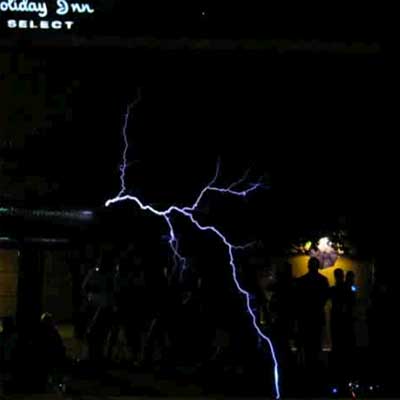
(Click the image to see the video)
It seems like the sound has a bit-depth of 1-bit, making it ideal for chiptunes, and sure enough in the video showcase he played both music from Super Mario Bros (The underground theme) and Gameboy Tetris Type A music. There was also a first tune in the video that I don’t recognize. If you readers have a suggestion, tell me.
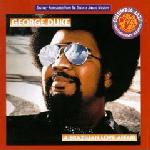 As a side note. The Super Mario Bros underground music seems to be very much inspired by a riff from George Duke’s 1979 record Brazilian Love Affair (From the first song, which shares its name with the album) I haven’t listened through the whole album for more possible sources of inspiration for Koji Kondo.
As a side note. The Super Mario Bros underground music seems to be very much inspired by a riff from George Duke’s 1979 record Brazilian Love Affair (From the first song, which shares its name with the album) I haven’t listened through the whole album for more possible sources of inspiration for Koji Kondo.
However… I’d like to have on of these! I’d hook it up with MIDI or something and make it a full fledged synth. One of the first things that I’d try to do is to add polyphony. Since the modulation in question is probably only a simple PCM, I’d try to increase the virtual bit depth, so to speak. Two or four square waves isn’t too much to ask for, right?
The Tesla coil link also reminded me of another thing I’ve been planning to post for some time. I’ve found a 1970 magazine about technology, and one article caught my attention. It was about one of those crazy inventions that never left the drawing board because for reason or other.
What I found was an article about a so called flame speaker. In some weird way it uses a speaker to amplify a sound. The scanned article is in Swedish, but Google has (at least) two more useful links, with scans from English magazines from the time.
http://www.swtpc.com/mholley/PopularElectronics/May1968/Flame_Amplification.htm
http://www.4×4pride.org/Flame/Docs/FlameAmp/FlameAmp.html
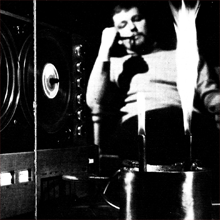
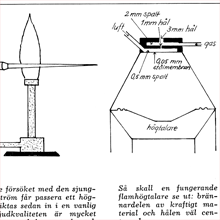
Click images for full article scans (in Swedish)
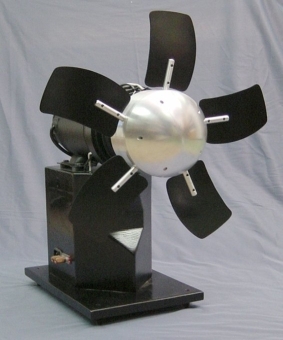 I’d like to build a flame amplifier/speaker at some point. But a fair guess is that the bass response is pretty bad. What to do about that? Just go buy a sub woofer?
I’d like to build a flame amplifier/speaker at some point. But a fair guess is that the bass response is pretty bad. What to do about that? Just go buy a sub woofer?
Not me! I’d complete it with a Rotary Woofer. In simple terms you could say that this is a fan that pushes the air back and forth, and so creating the sound.
So for the last onconventional type of speaker. It’s called a bumbimagi… No it isn’t, RastaMahn, STFU and get a life. It’s the directional type of speaker. It works not by producing any audible sound itself. Instead it produces a beam of ultrasound, which is inaudible to humans. (But is audible and even painful for dogs, and can still damage human ears, but that’s another story) The ultrasound then gets distorted in the air which produces audible frequencies.
The effect is similar to what happens when you play two notes on an instrument with a certain interval. (I don’t remember which interval now) the tones create a subharmonic. This is a technique used primarily by xylophonists. In a more controlled form the effect can, as mentioned, be used to create directed sound. The sound audible to humans is only audible within the pillar of air, defined by the direction of the speaker.
The product is being sold by the company HoloSonics, and they also have a little more information on the technology.
This post also comes with a couple of bonuses, things that I happened to find or do during the research for the post.
Here are some more scans from the Swedish 1970 magazine with article about flame amplification. (Flamhögtalare in Swedish)
The magazine is called “Tekniken idag” (Technology Today) which seems to be a special issue of “Tekniskt magasin” (The Technology Magazine)
Cover (Omslag)
The Computer, quickwitted, but dumb, spread 1 (Datamaskinen, snabbtänkt men dum, uppslag 1) - An article from back then about computers.
The Computer, quickwitted, but dumb, spread 2 (Datamaskinen, snabbtänkt men dum, uppslag 2) - Contains an image of a 1970 light pen and big big memory grid from the same year.
“Elmar” has the first artificial brain (”Elmar” har den första konstgjorda hjärnan) - An article about father of today’s robotic vacuum cleaners. However, “Elmar” is very stupid, it only uses one photocell to back off it comes to close to something… And that’s all it does, I think.
There are also a few more retrospective articles about astronomy, satellite spionage, supraconduction, the Loch Ness monster, PCMI microfilm, Hikari, (ひかり, the world’s fastest train at the time) an article about the future of television, (Amazingly mentioning flat TV’s) a test of a car PA, an article about Jules Vernes, and a collection of articles about space, which was the theme of the issue in question. There were also a few articles about cars and motor cycles that I didn’t find interesting enough to mention. (And whose contents are probably outdated, even from a retrospective point of view)
I can scan any of the articles mentioned, at request.
The other bonus is an album containing the complete sound track of Super Mario World, played on (mostly) acoustic instruments. Normally I tend to think that video game covers on traditional instruments tend to sound like shit, but this guy manages to do it in a proper way. The album has a professional touch to it, kind of like how Nintendo would do it to paraphrase the classic game in one of their newer titles.
So, check it out.
Zelda theme on a theremin
June 7th, 2007
This the theme for The Legend of Zelda, played on a theremin. (If you don’t know, it’s an instrument which is controlled by how your hands interfere with radio waves)
Makes me think… I want a theremin, but at the time being I don’t have enough time and money to buy one, let alone build one. So whenever I get some free time, I’m planning to build an optomin, which uses the same principle, but is based on light. In a typical optomin, you have a LED, whose light is reflected by the user’s hand onto an LDR, which in turn is part of an oscillation circuit. Maybe if I succeed in doing so, I’ll do an oscillator where I use the combo LED, hand, LDR, as the feedback loop in the oscillator. That’s an idea I got from watching a sketchup of a brushless DC motor. On a related note, DC motors tend to produce a kind of static when used, which can be a problem in practical application, because the surrounding electronics may suffer from the interference. However, I think that the square wave being produced could be musically useful. The square wave that it generates has a spike at every cycle, that I think will give very nice overtones. A synth based on DC engines? Eat that!
Where was I? Oh yeah, the optomin! I’ve already build two things with LDR’s in them, both of which were APC clones. The first one was this dual Atari Punk Console, and the second was the Gameboy Ounk Console, viciously built in a small Gameboy box, as promised to Dj Scotch Egg, during his visit to Sweden.
 Also, I’d like to give a shout to nerdarts.com which is a newly opened blog about geek and net culture, where one of my posts is featured on the front page. Unfortunately not with one my own projects, but there’ll be more of them coming. Also, maybe the tag chiptune is not suitable for that post?
Also, I’d like to give a shout to nerdarts.com which is a newly opened blog about geek and net culture, where one of my posts is featured on the front page. Unfortunately not with one my own projects, but there’ll be more of them coming. Also, maybe the tag chiptune is not suitable for that post?
However, despite being only one day old, the site already looks promising, I found some interesting stuff to read, and I’m eagerly waiting for more. RSS feed added, for sure!
![You suck at protoshop. No, you [i]really[/i] oo.](http://blog.gg8.se/images/you-suck-at-photoshop-you-really-do-your-awful.png)


